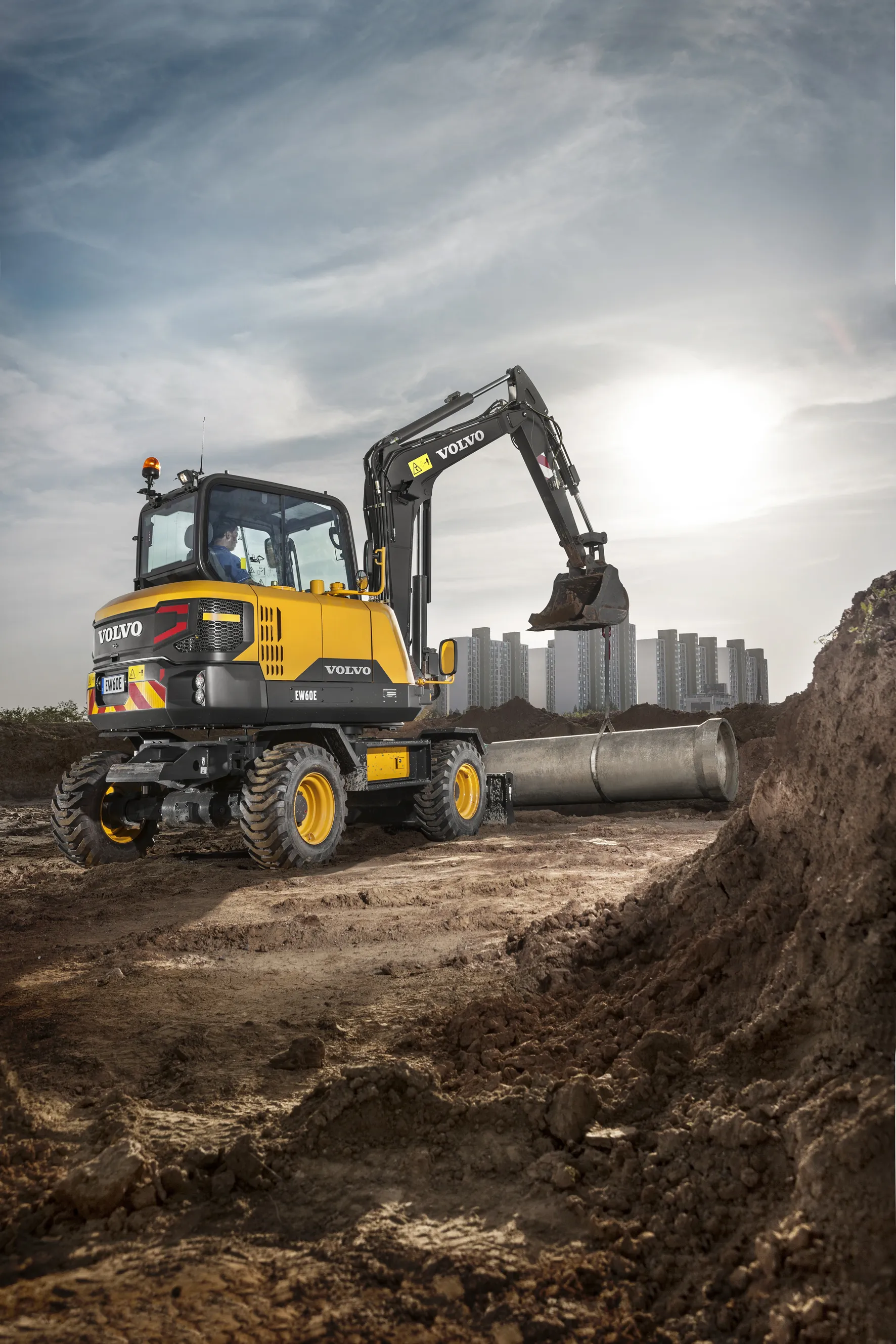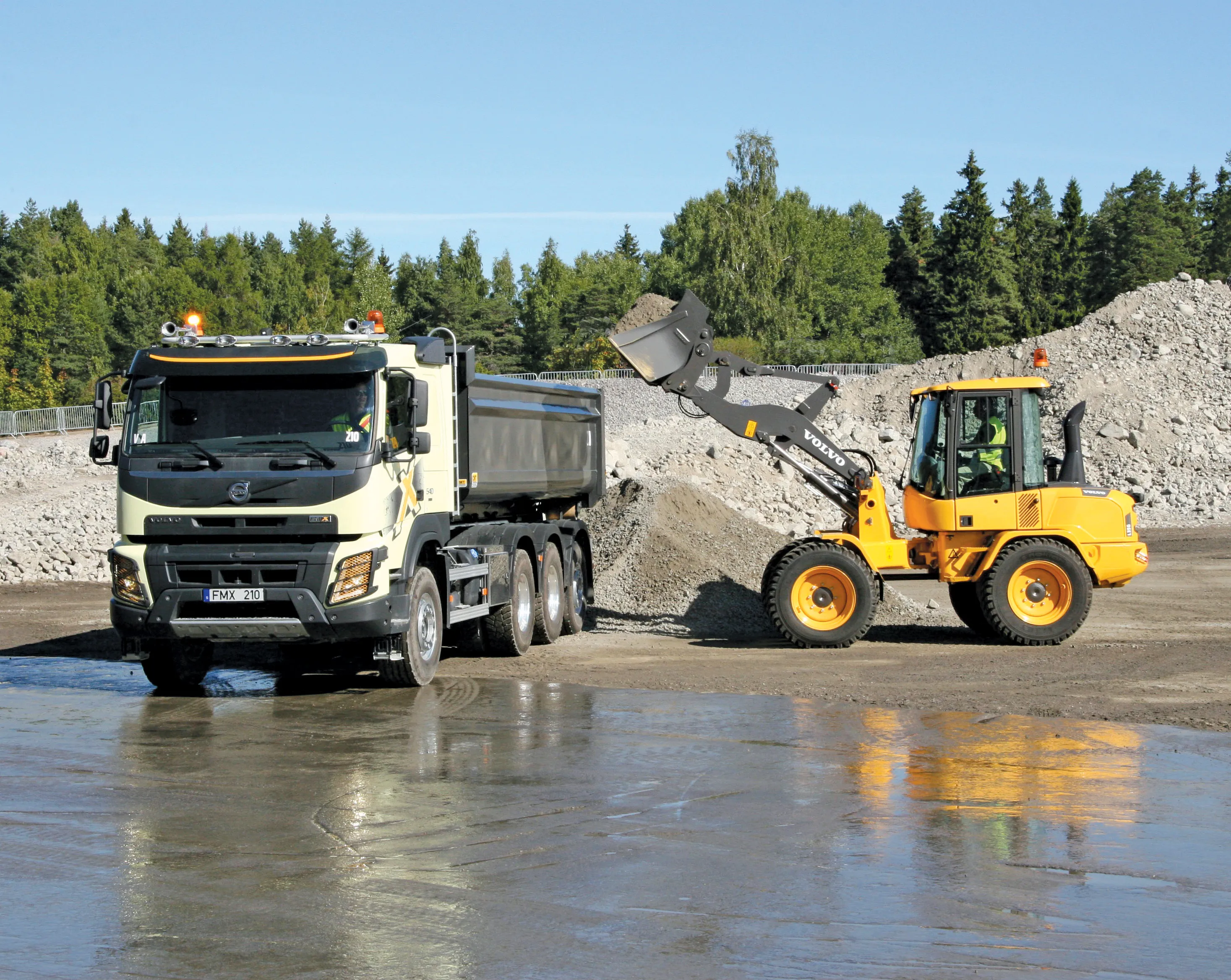Volvo Construction Equipment’s latest H-Series wheeled loaders give a high performance in heavy-duty operations.
All the machines - L150H, L180H, L180H HL (High-Lift), L220H and L250H - are equipped with Volvo’s OptiShift technology. Volvo says this eliminates power loss in the torque converter and reduces fuel consumption by up to 18%.
Combined with Volvo CE’s patented Reverse By Braking (RBB) technology, OptiShift boosts productivity and efficiency in all applications.
RBB is ideal for short cycl
April 4, 2016
Read time: 3 mins
Volvo Construction Equipment’s latest H-Series wheeled loaders give a high performance in heavy-duty operations.
All the machines - L150H, L180H, L180H HL (High-Lift), L220H and L250H - are equipped with Volvo’s OptiShift technology. Volvo says this eliminates power loss in the torque converter and reduces fuel consumption by up to 18%.
Combined with359 Volvo CE’s patented Reverse By Braking (RBB) technology, OptiShift boosts productivity and efficiency in all applications.
RBB is ideal for short cycle or truck loading applications – sensing the loader’s direction and slowing the machine by applying the service brakes automatically. This increases fuel efficiency, improves operator comfort and increases machine lifetime.
Volvo’s load-sensing hydraulics and a robust Tier 2/ Stage II Volvo engine, for less regulated markets, supply power to the hydraulic functions according to demand. This boosts efficiency and lowers fuel consumption.
The system ensures a fast response for shorter cycle times while delivering smooth operation through superior control of both the load and the attachment.
The L150H, L180H and L220H feature Volvo’s Torque Parallel linkage that delivers high breakout force and excellent parallel movement throughout the entire lifting range. The Volvo L250H features Volvo’s proven Z-bar linkage, providing high breakout force for strong, powerful digging in hard materials and facilitating quick load cycles for increased productivity.
The L150H, L180H and L250H can also be equipped with an optional Boom Suspension System to further boost productivity by up to 20%, absorbing shock and reducing the bouncing and bucket spillage that occur when operating on rough ground. The combination of sturdy tyres, BSS and additional counterweight means that these machines can fit a larger rehandling bucket, resulting in increased productivity in rehandling applications.
Boom Suspension comes as standard on the L180H HL. This machine, designed to achieve unrivaled lift height and reach in log handling applications, also features a log pusher to increase stack height by up to 30%. For comfort and safety, the log pusher is operated by two push buttons in front of the hydraulic control levers.
A spacious ROPS/FOPS certified cab provides a comfortable operating environment with ergonomically placed controls, ample storage space and a comfortable seat with three-point seat belt and seat belt warning. With low internal noise levels and vibration protection, operators will experience a productive work shift. The L150-250H feature an air filter system that allows 90% of the cab air to be recirculated through the filter for continuous dust removal.
Daily service checks can be carried out quickly and simply, thanks to ground level grouped service points, helping to achieve maximum uptime from each machine. Each cab can be tilted through 35° or 70° by way of a hydraulic pump to provide easy access to the vital components, and the wide engine hood opens electronically to ensure servicing is quick and easy.
Both front and rear axles feature an axle oil circulation feature, which allows oil to circulate and cool inside the axle. A hydraulically-driven cooling fan protects the machines’ vital components from damage by overheating. The fan activates automatically only when needed to limit fuel consumption and noise, and can be reversed to allow self-cleaning of the cooling units.
All the machines - L150H, L180H, L180H HL (High-Lift), L220H and L250H - are equipped with Volvo’s OptiShift technology. Volvo says this eliminates power loss in the torque converter and reduces fuel consumption by up to 18%.
Combined with
RBB is ideal for short cycle or truck loading applications – sensing the loader’s direction and slowing the machine by applying the service brakes automatically. This increases fuel efficiency, improves operator comfort and increases machine lifetime.
Volvo’s load-sensing hydraulics and a robust Tier 2/ Stage II Volvo engine, for less regulated markets, supply power to the hydraulic functions according to demand. This boosts efficiency and lowers fuel consumption.
The system ensures a fast response for shorter cycle times while delivering smooth operation through superior control of both the load and the attachment.
The L150H, L180H and L220H feature Volvo’s Torque Parallel linkage that delivers high breakout force and excellent parallel movement throughout the entire lifting range. The Volvo L250H features Volvo’s proven Z-bar linkage, providing high breakout force for strong, powerful digging in hard materials and facilitating quick load cycles for increased productivity.
The L150H, L180H and L250H can also be equipped with an optional Boom Suspension System to further boost productivity by up to 20%, absorbing shock and reducing the bouncing and bucket spillage that occur when operating on rough ground. The combination of sturdy tyres, BSS and additional counterweight means that these machines can fit a larger rehandling bucket, resulting in increased productivity in rehandling applications.
Boom Suspension comes as standard on the L180H HL. This machine, designed to achieve unrivaled lift height and reach in log handling applications, also features a log pusher to increase stack height by up to 30%. For comfort and safety, the log pusher is operated by two push buttons in front of the hydraulic control levers.
A spacious ROPS/FOPS certified cab provides a comfortable operating environment with ergonomically placed controls, ample storage space and a comfortable seat with three-point seat belt and seat belt warning. With low internal noise levels and vibration protection, operators will experience a productive work shift. The L150-250H feature an air filter system that allows 90% of the cab air to be recirculated through the filter for continuous dust removal.
Daily service checks can be carried out quickly and simply, thanks to ground level grouped service points, helping to achieve maximum uptime from each machine. Each cab can be tilted through 35° or 70° by way of a hydraulic pump to provide easy access to the vital components, and the wide engine hood opens electronically to ensure servicing is quick and easy.
Both front and rear axles feature an axle oil circulation feature, which allows oil to circulate and cool inside the axle. A hydraulically-driven cooling fan protects the machines’ vital components from damage by overheating. The fan activates automatically only when needed to limit fuel consumption and noise, and can be reversed to allow self-cleaning of the cooling units.








